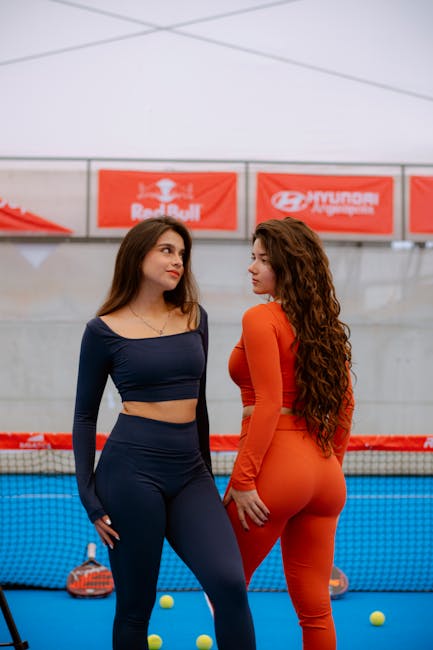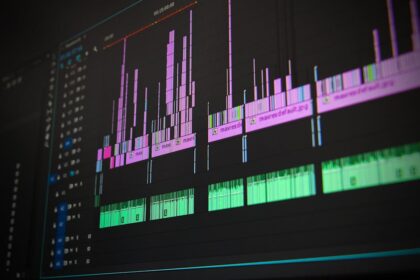Video Advertising on Social Media represents one of the most dynamic and impactful frontiers in digital marketing. Its ascendancy is not merely a trend but a fundamental shift in how brands connect with consumers. The proliferation of high-speed internet, coupled with the ubiquity of smartphones, has transformed social media platforms into vibrant ecosystems for visual storytelling. Consumers now spend an unprecedented amount of time engaging with video content, making it an indispensable tool for advertisers seeking to capture attention, build brand affinity, and drive measurable actions. The power of video lies in its ability to convey complex messages, evoke emotions, and demonstrate value in a concise and compelling format, far surpassing the capabilities of static imagery or text alone.
The evolution of social media platforms has been intrinsically linked to the rise of video. From the early days of short, user-generated clips to the sophisticated, high-definition productions seen today, video has continually reshaped the digital landscape. Platforms like YouTube pioneered long-form content, while Instagram and Snapchat popularized ephemeral stories and vertical formats. TikTok’s meteoric rise demonstrated the immense appetite for short-form, authentic, and trend-driven video. This diverse ecosystem demands a nuanced approach from advertisers, requiring not just compelling content but also a deep understanding of each platform’s unique audience, technical specifications, and engagement patterns. Brands that master the art of tailoring their video advertisements to the specific nuances of each social channel unlock unparalleled opportunities for reach, resonance, and return on investment.
The Indisputable Power of Video in Social Media Advertising
Video’s impact on social media advertising is multifaceted and profound. Firstly, it commands attention in a cluttered digital environment. Motion graphics, dynamic visuals, and engaging audio cues naturally draw the eye, making video ads harder to ignore than static counterparts. Secondly, video facilitates deeper emotional connection. Through storytelling, character development, and evocative imagery, brands can forge genuine bonds with their audience, fostering trust and loyalty. A product demonstration video, for example, can succinctly showcase features and benefits in a way that text descriptions simply cannot. Moreover, video offers unparalleled opportunities for demonstrating product utility, showcasing behind-the-scenes processes, or presenting testimonials that build credibility.
The persuasive power of video is further amplified by its shareability. Highly engaging video content is more likely to be shared, liked, and commented on, extending its organic reach beyond paid impressions. This viral potential, though not guaranteed, is a significant advantage. From a performance marketing perspective, video often boasts higher click-through rates (CTRs) and conversion rates compared to other ad formats. Marketers can leverage video to guide users through the entire marketing funnel, from initial brand awareness and consideration to direct purchase and post-purchase engagement. The rich data insights gleaned from video ad performance – such as view duration, completion rates, and audience demographics – provide invaluable intelligence for continuous optimization, allowing advertisers to refine their strategies and maximize their advertising spend.
Core Principles for Effective Social Video Advertising
To excel in social media video advertising, brands must adhere to several fundamental principles that transcend platform specifics. These principles form the bedrock of compelling and high-performing video campaigns.
-
Storytelling and Emotional Connection: At its heart, effective video advertising is about storytelling. People connect with narratives, not just products. Whether it’s a micro-story in a 15-second TikTok or a longer narrative on YouTube, the goal is to evoke emotion, solve a problem, or inspire action. Brands should identify their core message and weave it into a compelling arc that resonates with their target audience. This could involve showcasing customer success, demonstrating transformation, or sharing a brand’s mission and values. Authentic storytelling builds trust and fosters a deeper relationship with the consumer.
-
Platform-Specific Adaptations: One size does not fit all in social video. Each platform has unique design specifications, user behaviors, and content preferences.
- Vertical Video (9:16): Dominant on platforms like TikTok, Instagram Stories/Reels, and Snapchat. It fills the mobile screen, offering an immersive, full-screen experience that minimizes distractions. Ads should be shot or edited specifically for this orientation, considering the placement of text and key visual elements.
- Square Video (1:1): Highly effective on Instagram and Facebook feeds, where it occupies more screen real estate than horizontal video, making it more noticeable. It’s versatile and performs well across various devices.
- Horizontal Video (16:9): The standard for YouTube and often used for in-feed ads on Facebook or LinkedIn. Ideal for cinematic storytelling and detailed product demonstrations.
Advertisers must produce multiple versions of their video assets, optimizing aspect ratios, text overlays, and pacing for each platform to ensure maximum impact and native feel.
-
Sound-Off vs. Sound-On Experience: A critical consideration is that a significant portion of social media video is consumed without sound. Users scroll through feeds in public spaces, during commutes, or simply prefer to watch silently. Therefore, video ads must be equally effective with and without audio.
- Visual Hooks: The first few seconds are paramount. Use strong visual hooks, captivating motion, and clear branding upfront to grab attention.
- Captions and Text Overlays: Essential for conveying the message to silent viewers. Ensure captions are accurate, easy to read, and strategically placed. Text overlays can highlight key benefits, calls to action, or discounts.
- Audio Enhancement: For those who watch with sound, ensure high-quality audio, engaging music, and clear voiceovers that enhance the visual narrative. Sound design can significantly impact emotional resonance and brand recall.
-
Clear and Compelling Call to Action (CTA): Every video ad must have a clear objective and a compelling call to action. Whether it’s “Shop Now,” “Learn More,” “Sign Up,” “Download,” or “Visit Website,” the CTA should be prominent, easy to understand, and aligned with the campaign goal. CTAs can be integrated verbally, visually through text overlays, or via interactive buttons provided by the platform. The placement and clarity of the CTA directly influence conversion rates.
-
Authenticity vs. Polished Production: The debate between high-production value and raw authenticity varies by platform and target audience.
- Authenticity: Platforms like TikTok thrive on raw, user-generated style content. Videos that feel less like ads and more like native content created by everyday users often perform better. This includes leveraging trends, using popular sounds, and embracing imperfections.
- Polished Production: For brands targeting a professional audience on LinkedIn or showcasing high-value products, a more polished, professional look might be necessary to convey credibility and quality.
The best approach often involves a hybrid strategy, adapting the level of polish to the specific platform and campaign objective while always striving for genuine connection.
-
Short-Form vs. Long-Form Considerations:
- Short-Form (Under 15-30 seconds): Ideal for awareness, quick product highlights, or trend participation. They are highly digestible and suited for fast-scrolling feeds on platforms like TikTok, Instagram Reels, and Snapchat. The key is to convey the message rapidly and leave a lasting impression.
- Long-Form (30 seconds+): More suitable for detailed product demonstrations, testimonials, storytelling, or educational content. Platforms like YouTube, Facebook, and LinkedIn can accommodate longer formats. However, even with longer videos, the initial seconds remain crucial for retaining viewer interest.
-
A/B Testing Methodologies: Continuous optimization is vital. Advertisers should routinely A/B test different elements of their video ads:
- Visuals: Different openings, product shots, or talent.
- Copy: Headline variations, body text, CTA wording.
- Audio: Music choices, voiceover styles.
- Length: Short vs. long versions.
- CTAs: Different phrasing or button designs.
Testing provides data-driven insights into what resonates most with the target audience, allowing for iterative improvements and enhanced campaign performance.
Key Social Media Platforms for Video Advertising
Each major social media platform offers unique opportunities and challenges for video advertisers. Understanding their distinct ecosystems is crucial for crafting effective campaigns.
Facebook & Instagram:
As part of Meta, these platforms share a unified advertising interface (Meta Ads Manager) and audience targeting capabilities, making it efficient to run integrated campaigns. Their vast user bases provide unparalleled reach across diverse demographics.
-
Ad Formats:
- In-Stream Video Ads: Appear within longer video content (e.g., Facebook Watch). Ideal for reaching engaged viewers.
- Feed Video Ads: Native videos appearing in users’ main news feeds (Facebook and Instagram). Can be square, vertical, or horizontal. Highly discoverable.
- Stories Ads: Full-screen vertical videos that appear between users’ stories. Highly immersive and ephemeral. Great for driving quick actions.
- Reels Ads: Short-form, vertical video ads appearing within the Reels feed on Instagram and Facebook. Leverages trending audio and content styles.
- Audience Network: Extends reach to third-party apps and websites, displaying video ads within their content.
- Collection Ads: A video or image with multiple product images below, allowing users to browse and shop directly.
-
Targeting Capabilities:
- Demographics: Age, gender, location, language.
- Interests: Based on pages followed, content engaged with, and broader categories.
- Behaviors: Purchase behavior, device usage, travel intent.
- Custom Audiences: Retargeting website visitors, app users, or customer lists. Powerful for reaching warm leads.
- Lookalike Audiences: Creating new audiences similar to existing high-value customers, expanding reach with relevant users.
-
Campaign Objectives: Meta offers a wide array of objectives to align with specific marketing goals: Brand Awareness, Reach, Traffic, Engagement (video views, post engagement), Lead Generation, Conversions (website purchases, app installs), Catalog Sales, and Store Traffic. Choosing the right objective optimizes ad delivery for desired outcomes.
-
Creative Best Practices:
- Hook Early: Grab attention in the first 3 seconds, especially for feed and stories.
- Design for Sound Off: Use captions, text overlays, and strong visuals.
- Native Feel: Make ads blend seamlessly with organic content. For Reels, this means leveraging trends and popular audio where appropriate.
- Clear Branding: Ensure brand logo and messaging are visible throughout.
- Mobile-First: Optimize for mobile viewing, given the vast majority of consumption.
- Strong CTA: Prominently display and make actionable.
-
Measurement & Analytics: Meta Ads Manager provides comprehensive metrics: impressions, reach, frequency, video views (3-second, 10-second, ThruPlay), view rate, average watch time, CTR, conversions, cost per result, and ROAS. Pixels and SDKs enable detailed tracking and attribution.
YouTube:
The undisputed leader in online video, YouTube is effectively a search engine for video content and a powerful platform for reaching audiences actively seeking entertainment, education, or product reviews.
-
Ad Formats:
- Skippable In-stream Ads: Play before, during, or after other videos. Users can skip after 5 seconds. Advertisers pay if users watch 30 seconds (or the entire video if shorter) or interact with the ad.
- Non-skippable In-stream Ads: Up to 15-20 seconds long, these must be watched before the main video. Good for brand awareness and recall.
- Bumper Ads: Short, non-skippable ads up to 6 seconds. Ideal for driving brand awareness and delivering concise messages.
- Outstream Ads: Mobile-only ads that appear on partner websites and apps outside of YouTube. They start playing when visible on screen and are designed for brand awareness.
- Masthead Ads: A prominent, large ad unit displayed at the top of the YouTube homepage. Reserved for major brand launches or events, purchased on a reservation basis.
- In-feed video ads (formerly TrueView discovery ads): Appear in YouTube search results, next to related videos, or on the YouTube homepage. They invite users to click to watch, ideal for reaching users actively searching for content.
-
Targeting:
- Keywords: Targeting videos and channels based on relevant search terms.
- Topics: Reaching users interested in specific broad topics.
- Placements: Directly targeting specific YouTube channels, videos, or websites on the Google Display Network.
- Audiences: Demographic groups, affinity audiences (based on interests), in-market audiences (actively researching products/services), custom intent audiences (based on search terms), customer match (uploading customer lists), and remarketing.
-
TrueView Philosophy: YouTube’s core ad philosophy, particularly with skippable in-stream ads, is “you only pay when it’s viewed.” This encourages advertisers to create engaging content that viewers choose to watch.
-
Brand Suitability & Safety: YouTube provides robust controls for brand suitability, allowing advertisers to ensure their ads appear alongside content that aligns with their brand values.
-
Measurement & Analytics: Google Ads (which manages YouTube ads) provides detailed metrics: impressions, views, unique viewers, average CPV (cost per view), view rate, watch time, conversions, and brand lift studies (for larger campaigns).
TikTok:
Known for its rapid growth, highly engaged young audience, and trend-driven, authentic short-form video content. Advertising on TikTok requires a shift in mindset towards creativity and genuine engagement.
-
Unique Ecosystem & Audience Demographics: TikTok’s algorithm favors highly engaging content, and its users value authenticity and participation. The demographic skews younger, though it’s rapidly broadening. Trends, challenges, and popular audio are central to its culture.
-
Ad Formats:
- In-Feed Ads: Appear natively in users’ “For You” feeds, blending with organic content. Can be up to 60 seconds (though shorter is often better).
- TopView: A full-screen video ad that appears immediately when a user opens the app, offering maximum visibility for brand takeovers.
- Brand Takeover: Exclusive, full-screen static or dynamic ads that appear when a user opens the app.
- Branded Hashtag Challenge: Brands create a challenge and encourage user-generated content (UGC) participation around a specific hashtag. High potential for viral reach.
- Branded Effects: Custom filters, stickers, and AR effects that users can integrate into their videos, fostering creative interaction with the brand.
- Spark Ads: Promote existing organic TikTok posts, allowing brands to leverage successful content and creator partnerships.
-
Creative Principles:
- Authenticity is Key: Polished, traditional ads often underperform. Embrace a native, user-generated content (UGC) feel.
- Hook Immediately: Grab attention within the first second to prevent users from swiping past.
- Leverage Trends & Sounds: Integrate popular sounds, challenges, and creative trends. This shows brand relevance and helps content blend in.
- Vertical & Full-Screen: Design specifically for the 9:16 aspect ratio.
- Concise & Fast-Paced: Keep videos short, punchy, and visually stimulating.
- Clear Call to Action: But integrate it naturally within the content, not as an afterthought.
-
Measurement & Analytics: TikTok Ads Manager offers metrics like impressions, clicks, conversions, video views, average watch time, view rate, and reach. It also provides insights into how users interact with branded effects and hashtag challenges.
LinkedIn:
The premier platform for B2B advertising, LinkedIn offers unparalleled targeting capabilities based on professional demographics, making it ideal for reaching decision-makers and specific industries.
-
B2B Focus: Unlike consumer-focused platforms, LinkedIn is about professional networking, thought leadership, and career development. Video ads here should align with this professional context.
-
Ad Formats:
- Video Ads (Sponsored Content): Appear in the LinkedIn feed, similar to organic posts. Can be used to share thought leadership, product demos, case studies, or company culture videos.
- Carousel Video Ads: Combine multiple videos (or images) into a single scrollable ad unit.
- Single Image Ads with Video Elements: While primarily image-based, some functionalities allow for subtle video elements or links to external video.
-
Targeting: LinkedIn’s targeting is incredibly granular:
- Job Title, Seniority, Function: Target specific roles within companies.
- Industry: Reach professionals in relevant sectors.
- Company Size & Name: Target specific organizations or company sizes.
- Skills: Reach individuals with particular professional skills.
- Groups: Target members of specific LinkedIn Groups.
- Lookalike & Matched Audiences: Upload customer lists (e.g., leads from your CRM) or create lookalikes.
-
Content Considerations:
- Thought Leadership: Videos that offer insights, industry trends, or expert opinions.
- Case Studies: Showcase how your product/service solved a client’s problem.
- Product Demos: Detailed explanations of complex products or software.
- Company Culture: Attract talent by showing behind-the-scenes or employee testimonials.
- Educational Content: Webinars, tutorials, or brief explainer videos.
Video length can be longer than consumer platforms, as professional audiences may be willing to invest more time in valuable content.
-
Measurement & Analytics: LinkedIn Campaign Manager provides metrics such as impressions, clicks, video views (25%, 50%, 75%, 100%), average view duration, cost per view, lead form submissions, and website conversions.
Pinterest:
A visual discovery engine where users seek inspiration, plan projects, and discover products. Video ads on Pinterest are highly effective for showcasing products in use, how-to guides, and aspirational content.
-
Discovery & Inspiration Platform: Users are in a planning and purchasing mindset. Video content here should be aspirational, educational, or highly visual.
-
Ad Formats:
- Standard Video Pins: Appear within feeds and search results. Can be vertical or square.
- Max Width Video Pins: Larger video format that spans the entire feed width on mobile. Offers greater visibility.
-
Targeting:
- Interests: Based on what users pin and search for.
- Keywords: Targeting specific search terms users are looking for.
- Act-Alike Audiences: Similar to lookalike audiences, finding users with similar behaviors to existing customers.
- Customer Lists & Retargeting: Uploading customer data or retargeting website visitors.
-
Creative Best Practices:
- High-Quality Visuals: Pinterest is highly visual. Ensure videos are well-lit, aesthetically pleasing, and high-resolution.
- Show, Don’t Tell: Demonstrate product usage, DIY steps, or before/after transformations.
- Aspirational Content: Inspire users with lifestyle shots or how your product fits into their ideal life.
- Clear Branding & Product Focus: Ensure the product is central and easily identifiable.
- Mobile-Optimized Vertical Video: Vertical (9:16 or 2:3) often performs best, as most users browse on mobile.
- Sound Off Design: As with other platforms, make sure the video is understandable without sound.
- Direct Link to Product: Pins are inherently shoppable, so ensure a clear link to the product page.
-
Shopping Integration: Pinterest has strong shopping capabilities, allowing brands to link video ads directly to product listings for seamless purchasing.
-
Measurement & Analytics: Pinterest Ads Manager tracks impressions, clicks, video views, average play time, outbound clicks, saves, conversions, and ROAS.
Snapchat:
Known for its ephemeral content, augmented reality (AR) features, and younger, highly engaged audience. Video advertising on Snapchat should be interactive, fun, and authentic.
-
Ephemeral Content & Younger Demographics: Snapchat’s core is short-lived content, favoring quick, engaging, and often humorous video. Its audience skews younger, making it suitable for brands targeting Gen Z and younger millennials.
-
Ad Formats:
- Single Image or Video Ads: Full-screen vertical ads that appear between users’ stories or in the Discover feed.
- Collection Ads: Showcasing multiple products with a video header.
- Story Ads: A series of 3-20 single image or video ads that appear as a tile in the Discover feed.
- Lenses: Augmented Reality experiences that users can apply to their Snaps, often branded with interactive elements. Highly engaging and shareable.
- Filters: Overlays that users can apply to their Snaps based on location or event.
- Commercials: Non-skippable 6-second ads that play within Snapchat’s curated content (e.g., shows, publisher content).
-
Targeting:
- Demographics: Age, gender, location.
- Interests: Based on content consumed and user behavior.
- Lifestyles: Pre-defined audience segments based on broader interests.
- Custom Audiences: Retargeting and customer list uploads.
-
Augmented Reality (AR) Potential: Snapchat is a leader in consumer AR. Branded Lenses offer an immersive way for users to interact with a product or brand, leading to high engagement rates and organic sharing. This is a unique differentiator for creative campaigns.
-
Measurement & Analytics: Snapchat Ads Manager provides metrics like impressions, swipes (clicks), cost per swipe, eCPM (effective cost per mille), video views, completion rate, and engagement with AR lenses.
X (formerly Twitter):
A real-time platform driven by conversation, news, and trends. Video ads on X thrive on immediacy, conciseness, and often tie into trending topics or live events.
-
Real-time Engagement & News Focus: X’s strength lies in its immediacy and conversational nature. Video ads that are timely, relevant, or spark discussion often perform well.
-
Ad Formats:
- Promoted Video: Standard video ads appearing in users’ timelines. Can be up to 10 minutes, but shorter is usually better for attention.
- In-Stream Video Ads: Your ad plays as a pre-roll or mid-roll before/during premium content from X’s Amplify partners (publishers, media companies). Offers brand safety and contextually relevant placement.
- Sponsored Moments: A curated collection of tweets, videos, and images around a specific event or topic, which brands can sponsor.
- Live Video Advertising: Brands can sponsor live streams or run pre-roll/mid-roll ads during live events on X.
-
Targeting:
- Keywords: Target users discussing specific topics or using certain keywords.
- Interests: Based on followers, engaged content, and broader interest categories.
- Follower Look-alikes: Target users who have similar interests or demographics to followers of specific accounts.
- Tailored Audiences: Retargeting website visitors, customer lists, or app users.
- Demographics & Geography: Standard targeting options.
-
Creative Best Practices:
- Concise & Impactful: X users scroll quickly. Get your message across in the first few seconds.
- Sound Off: While less prevalent than some platforms, captions are still recommended.
- Timely & Relevant: Align video content with trending topics, news, or current events.
- Strong Call to Action: Make it clear and easy to engage.
- Use X Cards: Attach a website card or app card to video ads for a more prominent CTA and visual.
-
Measurement & Analytics: X Ads Manager provides impressions, views, view rates, average cost per view, conversions, and engagement metrics (likes, retweets, replies).
Creative Strategy and Production for Social Video Ads
The effectiveness of any video ad hinges on its creative execution. A strong creative strategy encompasses everything from conceptualization to final delivery, ensuring the video resonates with the audience and achieves campaign objectives.
-
Pre-production: The Blueprint for Success
- Scripting: Develop a clear, concise script that outlines the narrative, dialogue (if any), and key messages. Focus on clarity and brevity, especially for short-form ads.
- Storyboarding: Visually map out the ad scene-by-scene. This helps visualize pacing, camera angles, transitions, and text overlays, ensuring a cohesive flow and identifying potential issues early.
- Shot Lists: Detail every shot needed, including camera angles, lighting, props, and talent actions. This ensures efficient shooting and prevents missed opportunities.
-
Production: Bringing the Vision to Life
- Lighting: Proper lighting is crucial for professional-looking video. Natural light is often best, but artificial lighting can be used to create specific moods or highlight products. Avoid harsh shadows or blown-out highlights.
- Audio: High-quality audio is non-negotiable, even for “sound-off” ads, as good audio enhances the overall perception of quality. Use external microphones for clear voiceovers and ensure music is balanced and appropriate.
- Camera Work: Whether using a smartphone or a professional camera, ensure stable footage. Experiment with different angles and shots to keep the video dynamic. Frame subjects effectively, considering the platform’s aspect ratio.
- Talent: If using actors or brand ambassadors, ensure they embody the brand’s persona and deliver lines authentically. Authenticity often trumps polished acting in social media.
-
Post-production: The Polishing Phase
- Editing: This is where the story truly comes together. Focus on tight editing, maintaining a brisk pace, and smooth transitions. Cut out unnecessary pauses or filler.
- Graphics & Text Overlays: Add on-screen text, motion graphics, and animated elements to reinforce key messages, highlight CTAs, and ensure comprehension for sound-off viewers. Use brand-consistent fonts and colors.
- Music & Sound Effects: Select music that matches the tone and mood of the ad. Royalty-free music libraries are essential. Sound effects can add impact and professionalism.
- Voiceover: If included, ensure the voiceover is clear, engaging, and well-timed with the visuals.
-
Crafting Compelling Narratives:
- Problem-Solution: Present a common problem your audience faces, then showcase how your product/service provides the ideal solution.
- Testimonial: Feature satisfied customers sharing their positive experiences. Authentic testimonials build trust and social proof.
- Behind-the-Scenes: Offer a glimpse into your brand’s culture, product creation process, or team. This builds transparency and humanizes the brand.
- Product Demo: Clearly demonstrate how a product works, highlighting its features and benefits in action.
- Educational/How-To: Provide valuable information or teach viewers a new skill, subtly integrating your product as a solution or tool.
-
Adherence to Brand Guidelines: Consistency is key for brand recognition. Ensure all video assets align with your brand’s visual identity (logos, colors, fonts) and tone of voice.
-
Legal Considerations:
- Music Rights: Always use licensed music or royalty-free tracks to avoid copyright infringement.
- Talent Release Forms: Obtain signed releases from anyone appearing in your video, granting permission for their image/likeness to be used.
- Disclosures: Clearly disclose sponsored content or partnerships as required by advertising regulations (e.g., FTC guidelines).
-
Accessibility: Ensure your video ads are accessible to all viewers. This primarily involves:
- Closed Captions: Provide accurate captions for all spoken dialogue. Many platforms offer automatic captioning, but manual review is critical for accuracy.
- Audio Descriptions (less common for short ads but important for longer content): Describe visual information for visually impaired viewers.
Targeting and Audience Segmentation
Precision targeting is what differentiates social media advertising from traditional broadcast media. By leveraging platform data, advertisers can reach the most receptive audiences, minimizing wasted ad spend and maximizing relevance.
-
Demographic Targeting: Basic yet fundamental. Includes age, gender, location (country, state, city, zip code), language, and education level. Useful for initial broad segmentation.
-
Interest-Based Targeting: Reaches users based on their expressed interests, hobbies, pages they follow, content they engage with, and past behaviors online. This allows for targeting individuals with a pre-existing affinity for related topics or products.
-
Behavioral Targeting: Leverages data on user actions and behaviors, such as online purchases, device usage, travel patterns, or political affiliations. This can be highly effective for reaching “in-market” audiences actively researching products or services.
-
Custom Audiences (Retargeting): One of the most powerful targeting strategies.
- Website Visitors: Shows ads to users who have previously visited your website. This is crucial for nurturing leads and converting users who showed initial interest.
- App Users: Targets individuals who have installed or interacted with your mobile app.
- Customer Lists: Upload hashed customer data (email addresses, phone numbers) to match with platform users. Ideal for reaching existing customers with promotions, loyalty programs, or cross-selling opportunities.
- Engagement Audiences: Targets users who have previously interacted with your social media content (e.g., watched your videos, liked your posts, followed your page).
-
Lookalike Audiences: Built upon custom audiences. Platforms identify common characteristics of your existing high-value customers or website visitors and find new users with similar attributes. This allows for scaling successful campaigns to new, relevant audiences.
-
Contextual Targeting: Places ads within content that is thematically relevant. On YouTube, this means targeting specific channels or videos. On X, it might involve targeting keywords being discussed.
-
Geographic Targeting: Pinpointing specific locations is vital for local businesses or campaigns with regional relevance. This can range from country-level down to specific neighborhoods.
-
Device Targeting: Optimizing campaigns for mobile, desktop, or tablet users. Some ad formats or user behaviors are device-specific (e.g., vertical video for mobile, app installs).
Effective targeting is an iterative process. Advertisers should start with hypotheses, test different audience segments, and refine their targeting based on performance data. Layering different targeting options often yields the most precise and high-performing audiences.
Budgeting and Bidding Strategies
Managing budget and selecting appropriate bidding strategies are critical for maximizing return on ad spend (ROAS) and achieving campaign objectives efficiently.
-
Budget Types:
- Daily Budget: Averages the amount you’re willing to spend per day. Platforms may spend slightly more or less on any given day but will average out over the week.
- Lifetime Budget: A fixed amount spent over the entire duration of a campaign. The platform optimizes daily spend to achieve the total budget within the specified timeframe.
-
Bidding Models: How you pay for your ad impressions or actions.
- CPM (Cost Per Mille/Thousand Impressions): You pay for every 1,000 times your ad is shown, regardless of whether it’s clicked or viewed. Common for brand awareness campaigns.
- CPV (Cost Per View): You pay for each video view, often defined as a certain duration (e.g., 3 seconds, 10 seconds, or a ThruPlay on Meta). Common for video view campaigns.
- CPC (Cost Per Click): You pay only when a user clicks on your ad. Ideal for driving traffic or direct response.
- CPA (Cost Per Acquisition/Action): You pay for a specific desired action, such as a lead, sign-up, or purchase. The platform optimizes delivery to generate as many conversions as possible within your budget.
-
Automated vs. Manual Bidding:
- Automated Bidding: The platform’s algorithm automatically adjusts bids in real-time to achieve your objective (e.g., maximize conversions, get the most video views) within your budget. Recommended for most advertisers, especially those new to a platform, as it leverages vast data.
- Manual Bidding: You set a specific maximum bid for each impression or action. Offers more control but requires constant monitoring and optimization to remain competitive and cost-effective.
-
Bid Caps and Cost Caps:
- Bid Cap: Sets a maximum amount you’re willing to bid per action in an automated bidding strategy. This can control costs but may limit delivery if the cap is too low.
- Cost Cap: Specifies the maximum average cost per desired action. The system will try to keep the average cost per conversion below this cap.
-
Optimizing for Value: Instead of just optimizing for the lowest cost per click or view, consider optimizing for the value of the action. For example, if you sell products, optimize for purchase conversions and track Return on Ad Spend (ROAS). Some platforms allow bidding based on conversion value, enabling you to prioritize higher-value purchases. Budget and bidding strategies should always be aligned with the campaign’s ultimate business objective.
Performance Measurement and Optimization
Effective video advertising on social media is a continuous cycle of execution, measurement, analysis, and optimization. Robust performance tracking is essential to understand what’s working, what’s not, and how to improve.
-
Key Performance Indicators (KPIs): The metrics you track depend on your campaign objectives.
- Reach & Impressions:
- Reach: The number of unique users who saw your ad.
- Impressions: The total number of times your ad was displayed (a single user can have multiple impressions).
- Frequency: Impressions divided by reach, indicating how many times, on average, a unique user saw your ad. High frequency can lead to ad fatigue.
- Video Views & Engagement:
- Video Views: The number of times your video ad was played (often defined by a minimum duration, e.g., 3-second view, 10-second view, ThruPlay).
- View Rate: The percentage of impressions that resulted in a view.
- Average Watch Time: The average duration users spent watching your video.
- Completion Rate: The percentage of users who watched your video to 25%, 50%, 75%, or 100%. High completion rates indicate engaging content.
- Click-Through Rate (CTR): The percentage of people who saw your ad and clicked on it. Higher CTR indicates better ad relevance and appeal.
- Conversion Rate: The percentage of users who clicked on your ad and completed a desired action (e.g., purchase, sign-up, lead).
- Cost Per Conversion (CPA): The total ad spend divided by the number of conversions. A critical metric for performance campaigns.
- Return on Ad Spend (ROAS): Revenue generated from ads divided by the cost of ads. The ultimate measure of profitability for sales-driven campaigns.
- Brand Lift: For awareness campaigns, these are often measured through surveys or specific platform tools to assess changes in brand awareness, ad recall, message association, favorability, and purchase intent after exposure to your ads.
- Reach & Impressions:
-
Attribution Models: How credit for a conversion is assigned across different touchpoints in the customer journey. Common models include:
- Last Click: 100% of credit goes to the last click before conversion.
- First Click: 100% of credit goes to the first click.
- Linear: Credit is evenly distributed across all clicks.
- Time Decay: More credit is given to clicks closer in time to the conversion.
- Data-Driven (Algorithmic): Uses machine learning to assign credit based on actual campaign data.
Understanding attribution helps allocate budget more effectively across different channels and ad types.
-
A/B Testing and Iteration: Continuous testing is fundamental to optimization. Regularly test variations of:
- Creative: Different video concepts, hooks, lengths, music, and CTAs.
- Audiences: Different targeting segments, lookalike percentages.
- Placements: How ads perform across various placements within a platform (e.g., Feed vs. Stories vs. Reels).
- Bidding Strategies: Automated vs. manual, different bid caps.
Analyze the results, learn from them, and apply those learnings to iterate and improve subsequent campaigns.
-
Monitoring and Reporting Tools:
- Platform Analytics: Meta Ads Manager, Google Ads, TikTok Ads Manager, LinkedIn Campaign Manager, Pinterest Ads Manager, etc., provide rich dashboards and reporting features.
- Third-Party Tools: Google Analytics, CRM systems, or dedicated attribution platforms can provide a holistic view across channels and deeper insights.
-
Troubleshooting Common Issues:
- Low Reach/Impressions: Check budget, bid competitiveness, audience size, and ad creative quality score.
- Low Video Views: Indicates a poor hook or unengaging content in the first few seconds.
- Low CTR: Suggests the ad is not compelling enough or not relevant to the audience.
- High CPA/Low ROAS: Might mean targeting issues, poor landing page experience, or creative fatigue.
- Ad Fatigue: When the same audience sees your ad too many times, leading to diminishing returns. Address by rotating creatives, expanding audiences, or pausing campaigns.
Future Trends in Social Video Advertising
The landscape of social media video advertising is constantly evolving. Anticipating future trends allows brands to stay ahead of the curve and innovate their strategies.
-
AI and Machine Learning in Ad Creation & Optimization: AI is already revolutionizing ad optimization (e.g., automated bidding). Future advancements will see AI assisting in:
- Creative Generation: AI tools generating video scripts, storyboards, or even full video ad variations based on performance data.
- Personalization at Scale: AI dynamically generating personalized video ads for individual users based on their real-time preferences and behaviors.
- Performance Prediction: More accurate predictions of ad performance before launch, allowing for proactive adjustments.
-
Interactive Video Ads: Moving beyond passive consumption, interactive video allows viewers to engage directly with the content. This includes:
- Polls & Quizzes: Within the video.
- Branching Storylines: Viewers choose their path.
- Clickable Hotspots: To learn more about specific products within a scene.
- Gamified Elements: Mini-games or challenges within the ad.
These foster deeper engagement and can lead to higher conversion rates by making the viewer an active participant.
-
Live Shopping Integration: Platforms are increasingly integrating live stream shopping experiences, allowing viewers to purchase products directly while watching a live video demonstration or Q&A session. Brands can leverage this trend by running video ads promoting upcoming live shopping events or showcasing clips from past successful streams.
-
Augmented Reality (AR) and Virtual Reality (VR) Ads: While nascent, AR and VR offer immersive advertising experiences.
- AR Filters/Lenses: As seen on Snapchat and Instagram, allowing users to “try on” products (makeup, clothes), visualize furniture in their homes, or interact with branded 3D objects.
- VR Experiences: More complex, but could involve virtual showrooms or immersive brand storytelling in metaverse environments.
-
Personalization at Scale: Moving beyond basic demographic targeting, video ads will become increasingly tailored to individual user preferences, past interactions, and real-time context. This could involve dynamic creative optimization where different elements (product shots, call-to-actions, even voiceovers) are swapped out based on the user viewing the ad.
-
Increased Focus on Authenticity and User-Generated Content (UGC): The success of platforms like TikTok has reinforced the power of authenticity. Brands will continue to lean into UGC, influencer collaborations, and less polished, more relatable video content that feels native to social feeds rather than highly produced commercials. Encouraging and repurposing user-generated video content will become a core strategy.
-
Privacy Regulations and Data Ethics: With growing concerns over data privacy (e.g., GDPR, CCPA, iOS App Tracking Transparency), advertisers will need to adapt to evolving regulations. This means prioritizing privacy-centric measurement solutions, focusing on first-party data, and building trust through transparent data practices. The emphasis might shift towards contextual targeting and creative excellence rather than hyper-personalized targeting based on extensive user tracking.
The future of social media video advertising is bright, characterized by innovation, deeper engagement, and a continued push towards more authentic and valuable interactions between brands and consumers. Brands that embrace these evolving technologies and adapt their creative strategies will be best positioned to thrive in this dynamic landscape.











